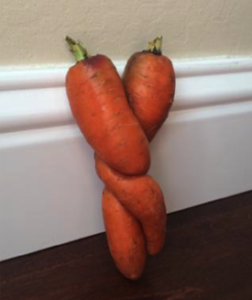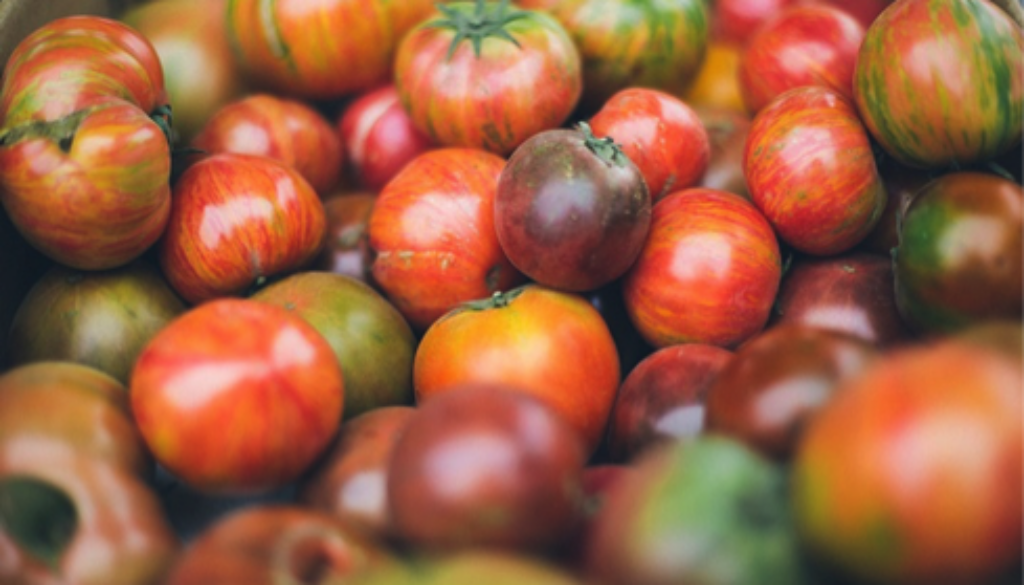Ugly Food Movement
How blemished food can feed the planet…
 Nearly 800 million people worldwide suffer from hunger. SO why is it that 2.9 trillion pounds of food, about a third of the planet’s production, are discarded each year, according to the Food and Agriculture Organization of the United Nations? That is enough to feel every one of those 800 million more than twice! In the US, the USDA reported that 133 billion pounds of food was tossed away in 2014. Wasting food also has a far-reaching environmental toll too, squandering the water, fertilizer, pesticides, seeds, fuel and land needed to grow it. Much of this food is not eaten based on its appearance, despite being safe and edible. In developing countries, food is wasted due to lack of adequate storage facilities and refrigeration, while here in the US, it gets tossed when retailers order or serve too much, or we ignore our fridge leftovers or toss perishables before they have expired. With millions going hungry, looking at ways to save our wasted food could have a tremendous impact on combatting world hunger and saving the planet too!
Nearly 800 million people worldwide suffer from hunger. SO why is it that 2.9 trillion pounds of food, about a third of the planet’s production, are discarded each year, according to the Food and Agriculture Organization of the United Nations? That is enough to feel every one of those 800 million more than twice! In the US, the USDA reported that 133 billion pounds of food was tossed away in 2014. Wasting food also has a far-reaching environmental toll too, squandering the water, fertilizer, pesticides, seeds, fuel and land needed to grow it. Much of this food is not eaten based on its appearance, despite being safe and edible. In developing countries, food is wasted due to lack of adequate storage facilities and refrigeration, while here in the US, it gets tossed when retailers order or serve too much, or we ignore our fridge leftovers or toss perishables before they have expired. With millions going hungry, looking at ways to save our wasted food could have a tremendous impact on combatting world hunger and saving the planet too!
There are many individuals and organizations out there trying to rescue surplus food from restaurants and markets and redistributing it to homeless shelters and soup kitchens, and collaborating with farmers to collect imperfect food that they cannot sell or surplus produce and selling it for a fraction of the cost in poorer neighborhoods to improve urban access to healthy produce, albeit with blemishes.
Dana Cowin, editor-in-chief of Food and Wine Magazine, launched the Ugly Food Movement to raise awareness of unnecessary waste of imperfect-looking food. In her words,“ the ugly food movement embraces the potential of funny-looking or smaller-sized fruits, vegetables and other wild-looking edibles. If, as consumers, we can change our mindset so that we see gnarled, twisted, lumpy or otherwise imperfecas beautiful, we can create demand, change the system and ultimately help feed the world. It’s the difference between choosing a lumpy, two-headed tomato at the market instead of a round, shiny tomato — very little effort for a lot of gain. There’s imperfect food out there that just needs a mouth to bite into it!”
So as food consumers, what can we do to rescue imperfect food and cut down on food waste?
1. Survey your fridge and cabinet for food on the verge of going bad, and consider freezing or canning extras
2. Shop at local groceries and farmer’s markets that offer misshapen food at a discount.
3. Buy prepared meals at the deli or salad bar, where supermarkets can make better use of imperfect produce
4. Try buying side cuts of fish and meat to use in stews
5. Don’t reject gently bruised fruits or cosmetically challenged vegetables, try turning them into smoothies, jams, sauces,and curries
6. Don’t waste uneaten food at a restaurant—take home leftovers and use them for a redesigned meal the next day
7. Eat leftovers regularly
8. Spread the word
Embrace nature’s blemishes and don’t discount and discard imperfect food. The planet’s welfare is at stake!
References:
Lauren Lee-Johnson, CNN. “How Ugly Food Can End Hunger”. CNN. N.p., 2016. Web. 7 June 2016.
Royte, Elizabeth. “How ‘Ugly” Fruits and Vegetables Can Help Solve World Hunger.” National Geographic March 2016: 31-55



